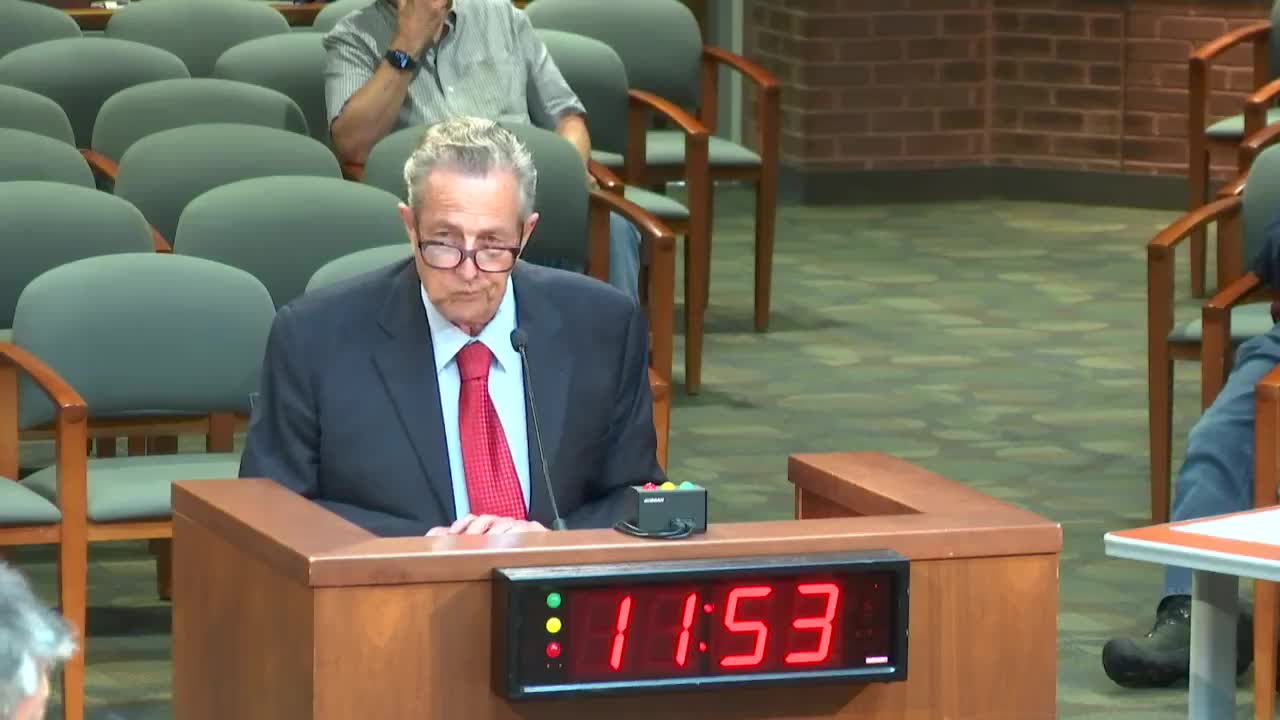Public Hearing Explores Definition of Athletic Fields in County Zoning Debate
June 05, 2025 | Howard County, Maryland
This article was created by AI summarizing key points discussed. AI makes mistakes, so for full details and context, please refer to the video of the full meeting. Please report any errors so we can fix them. Report an error »

The government meeting held on June 5, 2025, in Howard County, Maryland, focused on the classification and implications of various athletic facilities, particularly in relation to impervious surfaces. The discussion was led by Mr. Hurwitz, who presented a list of athletic uses, including swimming pools, tennis courts, and disc golf courses, prompting a detailed examination of what constitutes an athletic field.
The meeting began with Mr. Hurwitz outlining the types of facilities considered under the term "athletic fields." He confirmed that many of these facilities, such as community and commercial swimming pools, tennis courts, and artificial turf fields, qualify as impervious surfaces. This classification is significant as it relates to land use regulations and environmental considerations.
A key point of contention arose regarding the inclusion of go-kart racing tracks within the definition of athletic fields. Mr. Rudder questioned the rationale behind the technical staff report, which stated that go-kart racing was not listed among the approved uses. The discussion highlighted the broad interpretation of "athletic fields," with Mr. Rudder asserting that this term could encompass a paved go-kart track used for professional training.
The dialogue further explored why specific activities, such as disc golf and ropes courses, were explicitly listed in the regulations if "athletic fields" was intended to be a comprehensive term. Mr. Rudder acknowledged the ambiguity in the legislative language, suggesting that the inclusion of specific activities alongside the broader term may not have been necessary.
The meeting concluded with Mr. Rudder expressing frustration over the lack of clarity in the regulations, particularly regarding the relationship between general classifications and specific enumerated uses. The discussions underscored the ongoing challenges in defining athletic facilities within the context of land use and environmental impact, leaving open questions about future regulatory interpretations and potential amendments.
The meeting began with Mr. Hurwitz outlining the types of facilities considered under the term "athletic fields." He confirmed that many of these facilities, such as community and commercial swimming pools, tennis courts, and artificial turf fields, qualify as impervious surfaces. This classification is significant as it relates to land use regulations and environmental considerations.
A key point of contention arose regarding the inclusion of go-kart racing tracks within the definition of athletic fields. Mr. Rudder questioned the rationale behind the technical staff report, which stated that go-kart racing was not listed among the approved uses. The discussion highlighted the broad interpretation of "athletic fields," with Mr. Rudder asserting that this term could encompass a paved go-kart track used for professional training.
The dialogue further explored why specific activities, such as disc golf and ropes courses, were explicitly listed in the regulations if "athletic fields" was intended to be a comprehensive term. Mr. Rudder acknowledged the ambiguity in the legislative language, suggesting that the inclusion of specific activities alongside the broader term may not have been necessary.
The meeting concluded with Mr. Rudder expressing frustration over the lack of clarity in the regulations, particularly regarding the relationship between general classifications and specific enumerated uses. The discussions underscored the ongoing challenges in defining athletic facilities within the context of land use and environmental impact, leaving open questions about future regulatory interpretations and potential amendments.
View full meeting
This article is based on a recent meeting—watch the full video and explore the complete transcript for deeper insights into the discussion.
View full meeting
